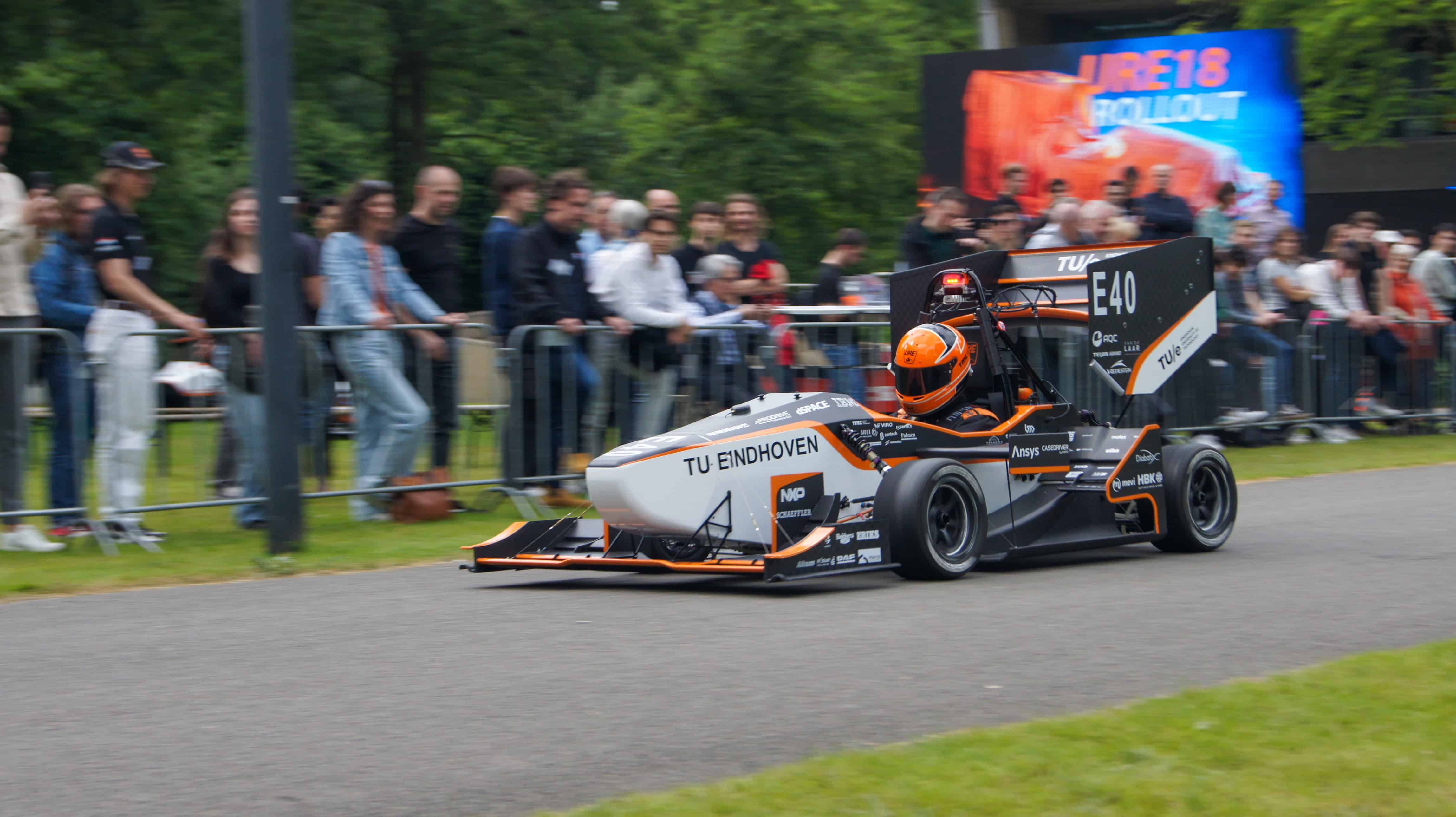
Taking corners at high speed and a higher top speed: student team URE recently presented a brand new electric race car to the outside world. With the URE18, which weighs only 200 kilograms, the students aim to secure a top spot in the Formula Student competition. “We are going for a podium finish,” says Daan Vloet, team manager of URE.
There is no doubt about it: the students of team URE have worked extremely hard over the past few months and with results. They are convinced they will perform well in the upcoming races with their new four-wheeled gem. In many ways, the URE18 is a different version from predecessor URE17. This is due to the many changes to this year’s car compared to previous years.
For example, there is an updated autonomous system; with improved LiDAR sensor and camera integration, the car’s “vision” is sharper. It is now possible to see one and a half times further ahead and see the track in colors. This makes for better recognition of the track in difficult situations. The concrete result: a higher top speed, from 75km/h to 90km/h. Also, the car can go through corners faster. In addition, the race car has an optimized aerodynamic package for greater stability.
Exciting matches ahead
Thanks to the many improvements, URE is once again competing for the top positions in the so-called Formula Student competition: the world’s largest engineering design competition in which universities from all over the world compete annually in Formula 1-like cars. “A place in the top five in the world rankings is the goal,” Vloet says.
The URE18 competes in the driver-driven category and in the autonomous class. In fact, at the push of a button, the car can be switched to fully autonomous driving. “With this, we want to show what is already possible when it comes to autonomous driving. We want to drive faster than a human with this system in the future.”
URE will participate in races this summer at the TT Circuit in Assen (both electric and autonomous), Budapest (autonomous) and at the Hockenheimring (both electric and autonomous). In the past, the student team managed to win several races, including their first autonomous race, three years ago at the Formula 1 circuit of Barcelona where Max Verstappen also once scored his first victory.

Teamwork
Vloet is proud of URE18, and even prouder of his hard-working team. “A lot of students joined us this year, which gave us a lot of gas. We even finished the car two months early Because the team was ahead of schedule, they were able to test vulnerable parts extensively. “I think the upright, the 3D printed connection of the rim to the suspension, is always an exciting part. We make parts lighter and lighter to go faster, but that also makes the parts more fragile. We do numerous simulations, but there is always the question of how it turns out in the real world. Fortunately in this case it turned out well.”
Interns from Summa and Fontys
What is special about URE is that the team consists of a mix of TU/e students and interns from Summa College and Fontys University of Applied Sciences. A total of 85 students are involved, including eight interns who each contribute their unique insights and expertise.
The team manager can still clearly remember the moment he first mentored a Fontys student. They were working on the suspension at the rear of the car. “Instead of working purely theoretically, he went straight into CAD (design software for racing car parts, ed.) to draw everything out. It’s nice to see that everyone knows their place well.”
Innovation Space
URE places great importance on Learning & Development within the team. Innovation Space, the expertise center for Challenge-Based Learning (CBL) and entrepreneurship at TU/e, provided URE with advice and support in recent years. Examples include workshops, training and reflection sessions to help students grow and achieve their goals.
URE19
Currently, the team is busy optimizing the new car for the races to come. The students pay a lot of attention to the mechanical setup, such as tire pressure. Vloet: “We are also taking another good look at the front wing because that part caused us to be disqualified last year. That obviously shouldn’t happen again.”
Meanwhile, the team is looking further ahead to next year. “We are now celebrating the URE18 and want to perform to the max, but behind the scenes, we are also already busy working on the URE19,” Vloet concludes. And who knows, maybe this one will be even a tad faster than this year’s version.

